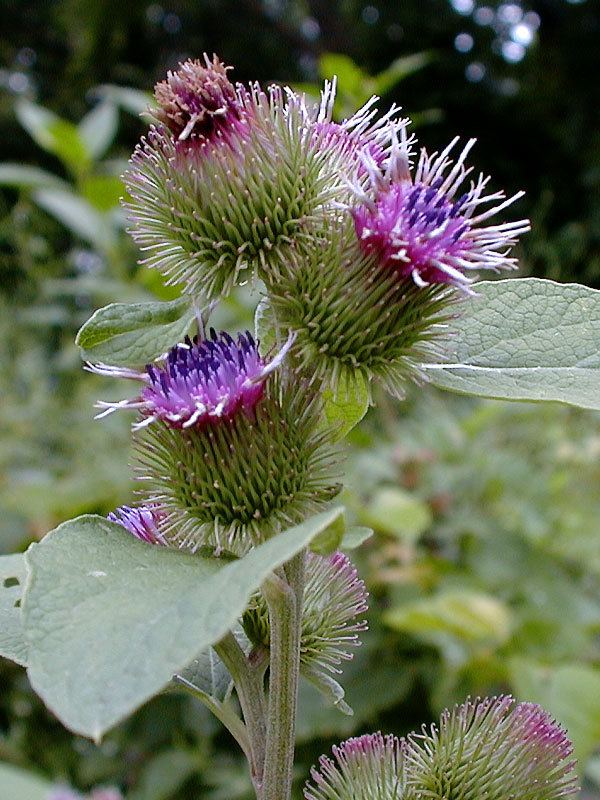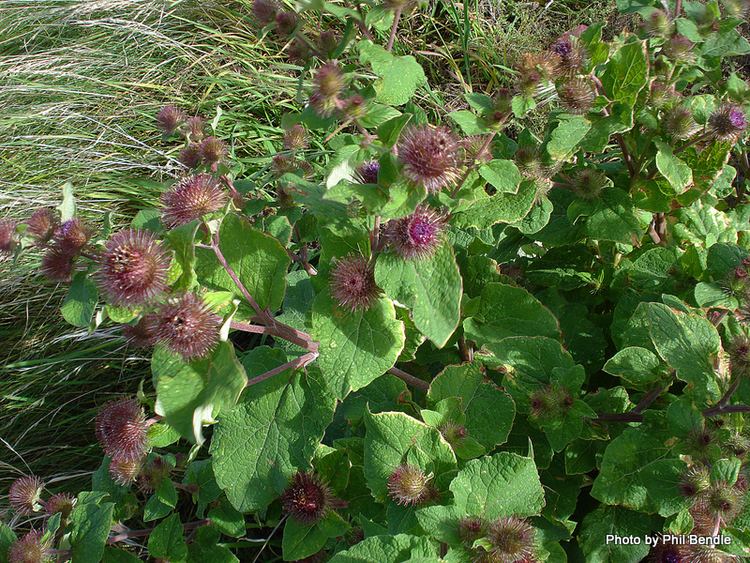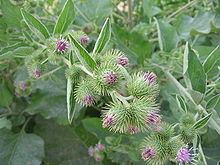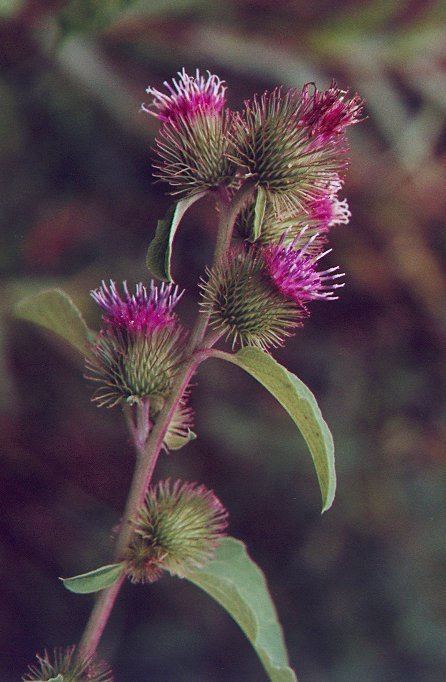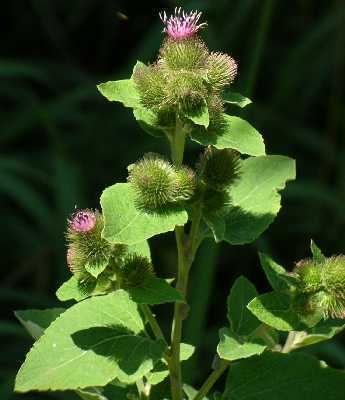Tribe Cynareae Rank Species | Genus Arctium Higher classification Burdock | |
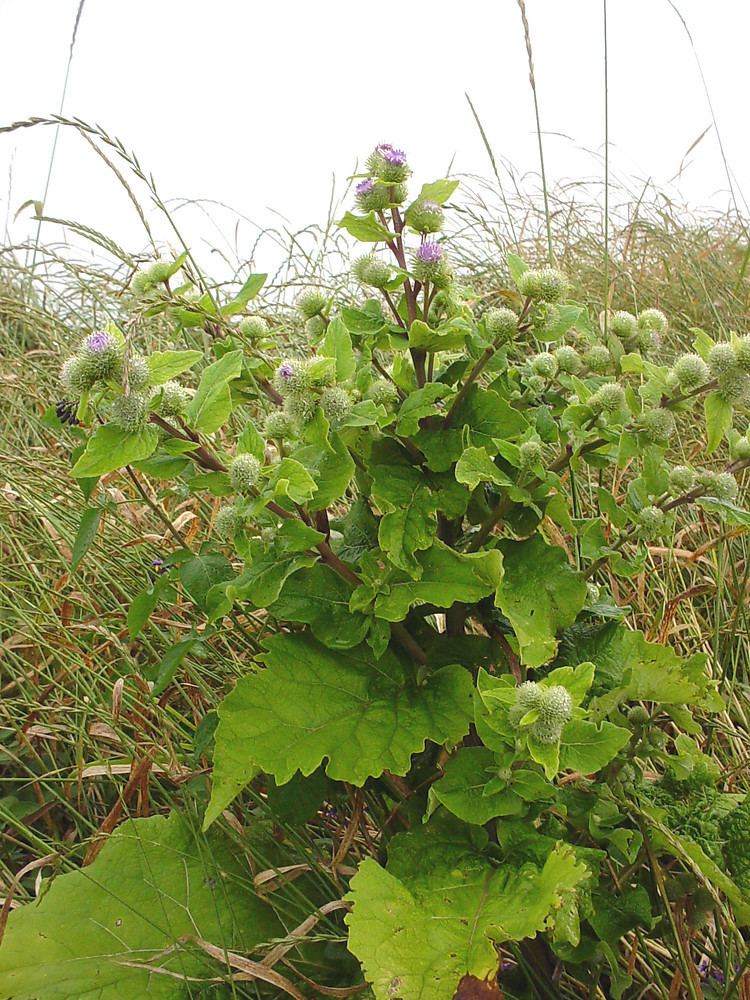 | ||
Similar Creeping Thistle, Allium vineale, Pineappleweed, Spear Thistle, Black Medic | ||
Lesser burdock arctium minus velcro plant kr kalappa sk garplanta villijurt
Arctium minus, commonly known as lesser burdock, burweed, louse-bur, common burdock, button-bur, cuckoo-button, or wild rhubarb, is a biennial plant. This plant is native to Europe, but has become an invasive weed in Australia, North and South America, and other places.
Contents
- Lesser burdock arctium minus velcro plant kr kalappa sk garplanta villijurt
- Plantes m dicinales bardanes arctium lappa et arctium minus
- References
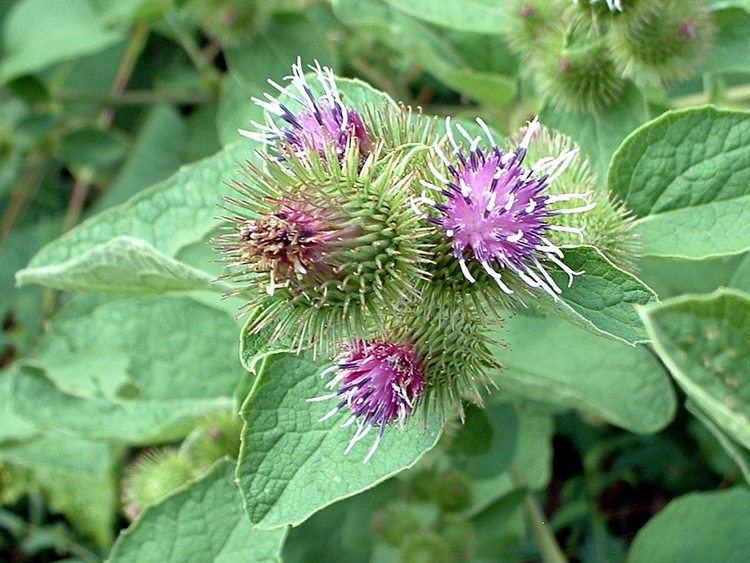
Characteristics: It can grow up to 1.5 meters (1 to 5 feet) tall and form multiple branches. It is large and bushy. Flowers are prickly and pink to lavender in color. Flower heads are about 2 cm (0.79 in) wide. The plant flowers from July through October. The flowers resemble and can be easily mistaken for thistles, but burdock can be distinguished by its extremely large (up to 50 cm) leaves and its hooked bracts. Leaves are long and ovate. Lower leaves are heart-shaped and have very wavy margins. Leaves are dark green above and woolly below. It grows an extremely deep taproot, up to 30 cm (12 in) into the ground.
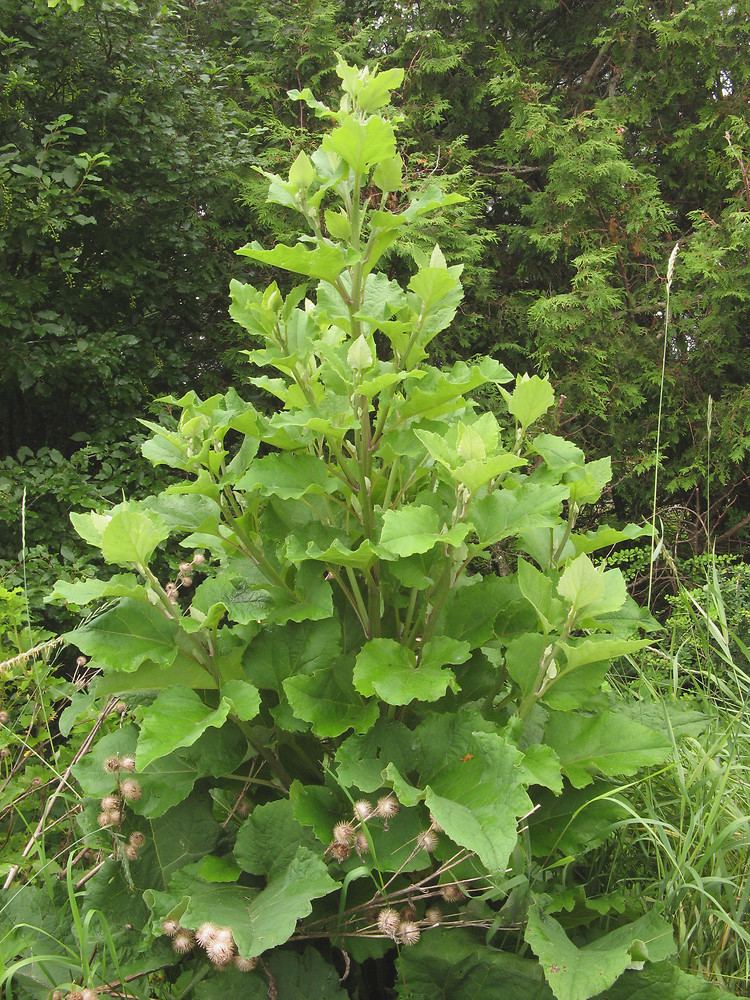
Lesser Burdock produces purple flowers in its second year of growth, from July to October. Outer bracts end in hooks that are like Velcro. After the flower head dries, the hooked bracts will attach to humans and animals in order to transport the entire seedhead.
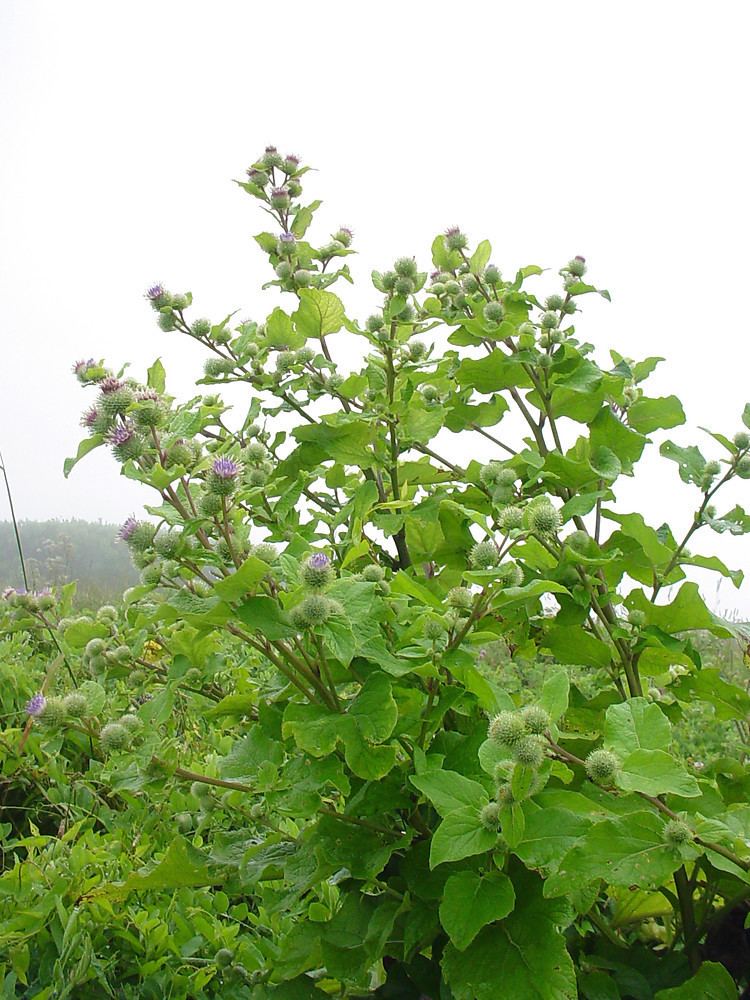
Plantes m dicinales bardanes arctium lappa et arctium minus
